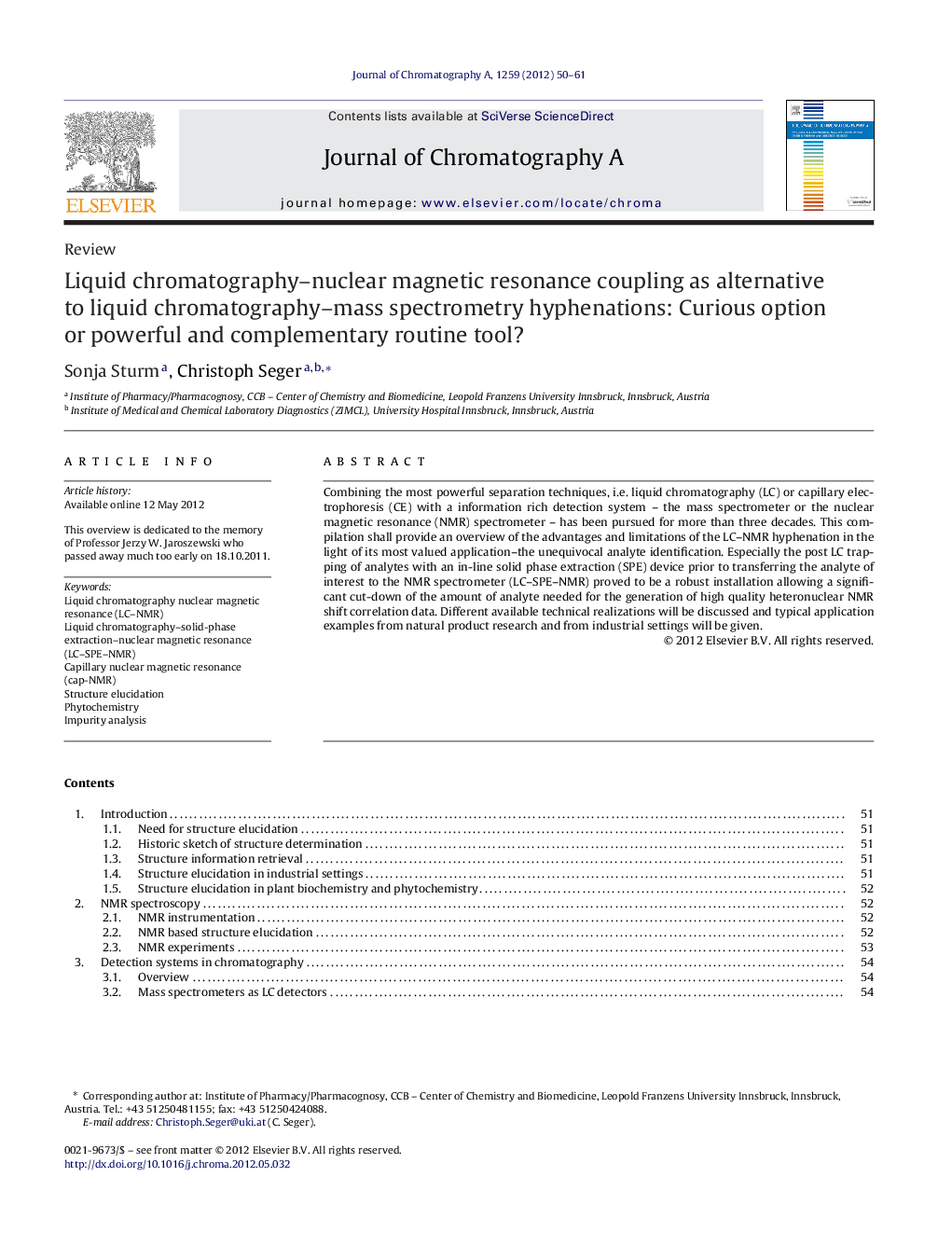| Article ID | Journal | Published Year | Pages | File Type |
|---|---|---|---|---|
| 1202319 | Journal of Chromatography A | 2012 | 12 Pages |
Combining the most powerful separation techniques, i.e. liquid chromatography (LC) or capillary electrophoresis (CE) with a information rich detection system – the mass spectrometer or the nuclear magnetic resonance (NMR) spectrometer – has been pursued for more than three decades. This compilation shall provide an overview of the advantages and limitations of the LC–NMR hyphenation in the light of its most valued application–the unequivocal analyte identification. Especially the post LC trapping of analytes with an in-line solid phase extraction (SPE) device prior to transferring the analyte of interest to the NMR spectrometer (LC–SPE–NMR) proved to be a robust installation allowing a significant cut-down of the amount of analyte needed for the generation of high quality heteronuclear NMR shift correlation data. Different available technical realizations will be discussed and typical application examples from natural product research and from industrial settings will be given.
► NMR spectroscopy is the major de novo structure elucidation method in liquid state. ► LC–NMR combines high resolution separation with unequivocal structure elucidation. ► The most advanced technical LC–NMR instrumentation is LC–SPE–NMR. ► Application fields range from pharmaceutical industry to phytochemistry.
